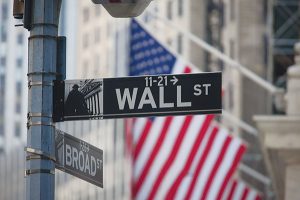We know that the US economy is currently weak, but the real economy is really weak, and the Federal Reserve’s commitment to precipitate a recession to curb high inflation will make this reality obvious to seemingly oblivious investors.
Real gross domestic product dropped for two consecutive quarters, and although the National Bureau of Economic Research has yet to declare that a recession is underway, those who concentrate on nominal numbers, uncorrected for high inflation, still hope that a business downturn can be avoided. They talk about rising wages in a tight labor market with low unemployment and job openings exceeding the number unemployed. Hourly pay in nominal terms is up 8.8% since May 2021.
But corrected for inflation, real wages have declined every month since then, bringing the cumulative drop to 3.2%. Even nominal wage growth is slipping, with March’s annual growth rate of 5.6% slowing to 5.2% in July. When other sources of personal income are included — employee benefits, proprietor’s income, rents, interest, dividends and government benefits—and income taxes are subtracted, disposable personal income rose 6.8% in the second quarter from a year earlier but fell 0.6% when adjusted for inflation.
Those who believe consumer spending is robust are confusing the overlays of inflation for the real economy. Since March 2021, nominal retail sales have risen 6.9% but are down 4.1% in real terms.
Denial of the ravages of inflation was also widespread in the late 1960s and 1970s when huge federal spending on the Vietnam War and Great Society programs pushed the economy into double-digit inflation. Despite the Johnson administration’s belief, the economy did not have the supply of labor or the industrial capacity to produce both arsenals of guns (military outlays) and butter (civilian products).
Corporate costs soared as CEOs felt duty-bound to keep employees at least apace of soaring prices. So not only did nominal wages grow but so did real pay. At the same time, depreciation of plant and equipment, based on historic costs, fell far short of the funds needed for replacement. Also, inflation created taxable inventory profits. The dollar value of inventories jumped even though the physical size of stocks didn’t change.
—Bloomberg
 The Gulf Time Newspaper One of the finest business newspapers in the UAE brought to you by our professional writers and editors.
The Gulf Time Newspaper One of the finest business newspapers in the UAE brought to you by our professional writers and editors.
